We have madmen waiting...
-Mideast terrorist leader,
1978
-opening quote of Zodiac, by Robert Graysmith
Sometimes, if you’ve seen the movie, you don’t need to read the book (The Boys From Brazil,Rosemary’s Baby, Marathon Man). Sometimes, the movie is a wretched pile of steaming garbage, making a great book seem even better in comparison (I’m looking at you, The World According to Garp and Beloved). Then you have cases like Zodiac, in which a terrific book is turned into an equally terrific movie, while being utterly different from each other.
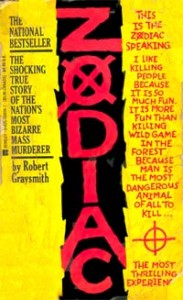 I am well aware that David Fincher’s Zodiac has its haters. And while I’m not entirely clear whether these folks take issue with the film or whether it has something do with Fincher himself, I urge them to watch it again with an open mind. Zodiac is a richly layered, endlessly fascinating probe into one of the most haunting and perverse serial killer cases in American history. And to this day, it remains unsolved. I believe Zodiac is one of Fincher’s best films, far superior to his wildly over-rated The Social Network. Despite Fincher’s usual distant, coldly methodical tone, I also believe this is his most personal film, for a variety of reasons.
I am well aware that David Fincher’s Zodiac has its haters. And while I’m not entirely clear whether these folks take issue with the film or whether it has something do with Fincher himself, I urge them to watch it again with an open mind. Zodiac is a richly layered, endlessly fascinating probe into one of the most haunting and perverse serial killer cases in American history. And to this day, it remains unsolved. I believe Zodiac is one of Fincher’s best films, far superior to his wildly over-rated The Social Network. Despite Fincher’s usual distant, coldly methodical tone, I also believe this is his most personal film, for a variety of reasons.
First, the basics: between December 20, 1968 and October 11, 1969, a deranged nutjob sent taunting letters to several newspapers in the California Bay Area which claimed responsibility for a series of brutal murders. The man who named himself the Zodiac sent four complicated cryptograms with his letters, only one of which has been persuasively decoded. Six victims have been confirmed to have been the work of the Zodiac Killer, and there are several more suspected, suggesting that Zodiac might have been active as early as 1966 and as late as 1971. The case remains open in Solano County, Napa County, and the city of Vallejo, California. While the case was labeled as “inactive” by the San Francisco Police Department, it was reopened sometime between 2004 and 2007.
Robert Graysmith was working as a political cartoonist at the San Francisco Chronicle at the time and was right in the thick of things. After spending years collecting a private scrapbook covering the killings, he published his famous nonfiction book in 1986.
Enter screenwriter James Vanderbilt (Darkness Falls, Basic, the upcoming The Amazing Spider-Man). After reading the book in high school and then meeting Graysmith (and according to some accounts, personally optioned the book at the age of eighteen - as a member of the storied Vanderbilt clan, this was possible.), Vanderbilt pitched the idea to Phoenix Pictures’ Mike Medavoy and Brad Fischer, who agreed to let him have more creative control over the project. The script attracted David Fincher, who grew up in Marin County. As Fincher told the New York Times:
"I remember coming home and saying the highway patrol had been following our school buses for a couple weeks now. And my dad, who worked from home, and who was very dry, not one to soft-pedal things, turned slowly in his chair and said: ‘Oh yeah. There’s a serial killer who has killed four or five people, who calls himself Zodiac, who’s threatened to take a high-powered rifle and shoot out the tires of a school bus, and then shoot the children as they come off the bus.’"
What fuels such an obsessive, morbid fascination with these kinds of things? Are we a culture of potential sociopaths, a culture of unfeeling savages so empty and devoid of human empathy that we study instances of sheer horrific tragedy just to give our own private prick-ish tendencies some kind of perspective? Kind of, yeah. But you're not here for my armchair sociological insights. Like Jack the Ripper, the Zodiac Killer is one of unknown boogeymen that still have the power to haunt our collective psyche. It's enough to inspire a former cartoonist's decades-long investigation - not to mention getting the preternatural attention of David Fincher.
So how is the movie different from the book? If you're tempted to wonder if the book is "better," know that such qualifications are pointless here. I'm sure much the same can be said of the upcoming Moneyball, an intriguing-looking movie based on - by many accounts - a relatively dry, statistics-drenched work of nonfiction. Robert Graysmith's Zodiac gives us the facts in a straight-forward, exhaustively researched, detailed narrative. The prose is thoroughly readable, and as one reads on, becoming utterly absorbed in what happened all those years ago, there is the sense that Graysmith meant his book as a tribute to the victims, the majority of them young couples ambushed on a date, next to a lake, in a parking lot. I think that Graysmith, subconsciously or not, considered himself a recording angel. These people existed. They were brutally killed. The killer wrote letters to the police, mocking them with cyphers and riddles. He was never caught or even concretely identified. How fucked up is that? Who would do these things and why?
The movie is a gripping dramatization of these events. Fincher has been lauded by critics for being able to craft a film so full of names, dates, events and mysteries and never once is the viewer lost or wondering what just happened. But what was this director's driving need to tell this story borne of? He's from the Bay Area, and on some primal level, these killings still haunt the area. I feel an odd connection to this story as well: Zodiac's first confirmed victims, David Arthur Faraday and Betty Lou Jensen, were killed in Benicia, California; Michael Mageau Renault and Darlene Elizabeth Ferrin were attacked in Vallejo, California; both towns are part of Solano County, as is my own hometown of Rio Vista. I know Benicia, I know Vallejo, I know San Francisco - this part of the world is famous for its tolerance and accepting attitude. The knowledge that this place can also breed such vicious, unfathomable violence is deeply disturbing... and endlessly fascinating.
David Fincher had already directed a serial killer movie, the modern classic Se7en, which propelled Brad Pitt's star deep into orbit, put Kevin Spacey on the map in a big way, and made it common practice to put numbers in movie titles for no reason. That movie was a hard-line thriller, heavy on style and atmosphere and grisly hideousness. Zodiac recreates the killings in clear-eyed detail, but it's not about the gore (and aside from a graphic stabbing scene and a slow-motion gunshot to the head, it's a surprisingly bloodless film), it's about the three men who made the Zodiac killings a personal mission.
Robert Graysmith (Jake Gyllenhaal as his most wide-eyed, earnest and convincing) was a divorced cartoonist. Dave Toschi (a strong Mark Ruffalo)was a flamboyant, well-known San Francisco supercop, the basis for not one but two iconic movie mega-detectives: Bullitt and Dirty Harry. Paul Avery (Robert Downey Jr., typecast but excellent) was a boozing, driven crime reporter who suffered a personal melt-down in the wake of the Zodiac killings but went on to publish probing accounts of the Patty Hearst kidnapping by the Symbionese Liberation Army and later a book on the subject. The unique structure of this film places each of these characters in the role of central protagonist at different times. And we cannot overlook the solid supporting performance by Anthony Edwards as Bill Armstrong, Toschi's partner and the cop whose notes and reports supplied some of the most detailed accounts of this case.
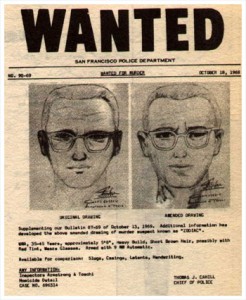 As time passes, the case grows cold and the public consciousness moves on. Avery melts down and disappears. Toschi fights crime, one day at a time. Graysmith gets the bright idea to write a book about the case, thinking that something new might shake loose. Graysmith gets Zodiac's - or someone's - attention, culminating in one tense, wordless encounter in a hardware story between Graysmith and everyone's favorite suspect, one Arthur Leigh Allen.
As time passes, the case grows cold and the public consciousness moves on. Avery melts down and disappears. Toschi fights crime, one day at a time. Graysmith gets the bright idea to write a book about the case, thinking that something new might shake loose. Graysmith gets Zodiac's - or someone's - attention, culminating in one tense, wordless encounter in a hardware story between Graysmith and everyone's favorite suspect, one Arthur Leigh Allen.
This all occurs under Fincher's steely, demanding direction. Vanderbilt's incisive script handles the meta-story in an admirably restrained way. The book studiously ignores the personal lives of these three men. Avery's meltdown is never mentioned, Toschi's obsession is hinted at, and as for Graysmith... well, he wrote the book, after all, devoting years to a maddeningly unresolved series of crimes. Fincher, Vanderbilt and the producers did further research, wisely realizing that to hold an audience's attention they'd need more than a series of grisly murders and that huge central question: who did this?
Jake Gyllenhaal turns in what is still his best performance to date, infusing Graysmith the Eagle Scout with a deeply honest urge to solve this puzzle. Graysmith's near-desperate confusion and befuddlement is a proxy for our own: why, after shooting at couples in parked cars, did Zodiac shoot cabbie Paul Stine in the middle of San Francisco for no apparent reason? Was Zodiac really responsible for the 1966 death of Cheri Jo Bates in Riverside? These questions whirl around the story, often leading to dead ends and red herrings. Indeed, the single most terrifying sequence in the film follows Graysmith as he is lured into a very creepy man's basement (played by the very creepy comedian Charles Fleischer - the voice of Roger Rabbit, of all things) by the promise of previously undisclosed evidence of Zodiac's identity. Fincher pours on the intense, stylized lighting, setting the encounter on an appropriately dark and rainy night. It's genuinely chilling, and ultimately fruitless.
As is the investigation. Arthur Leigh Allen was - and remains - the best suspect. A convicted sex offender, Allen was ambidextrous, which means he could have written the Zodiac letters with his non-dominant hand while in a disturbed state of mind. He had admittedly talked about shooting little kids as they came bouncing off the schoolbus - one of Zodiac's early threats. He lived right across the street from the first victim. He was one weird bastard. Was it really him? Was it one of the other suspects outlined in the book? How can we be sure either way?
Fincher may not have been driven by Graysmith's need to solve this, to honor the victims and not let this tragedy dissolve into the background. Fincher is not the most beloved director in La-La Land, and I would guess that this film is less about honoring the memories of the dead and more about the nature of obsession. Fincher is known to take a Kubrickian amount of takes per shot. Ruffalo recalled that the director required fifteen takes of him shuffling through a bunch of files. This exacting nature fits the material perfectly. Keeping Vanderbilt's studio-aggravating open-ending must have proved gratifying to a man who, upon receiving the green-light call on Fight Club, hung up the phone, turned to his assistant and said, "Those idiots just green-lit a $70 million experimental film."
There is a coda of sorts: one of Zodiac's few survivors, Michael Mageau, picks Arthur Leigh Allen's picture out of series of photos, identifying him as the man who shot him. This is a logical place to end things, but it's remarkably unsatisfying. In Graysmith's book, once the facts as he knows them are set forth, the incomplete and unresolved story laid out, he goes on and on in an extended appendix describing Zodiac's cars, his speech patterns, his weapons, his possible training. The book ends with this description from Zodiac's psychological profile:
The sexual sadist kills to achieve sexual pleasure. May never have had sexual intercourse. He seeks dehumanization of his victims into objects that he can have control over, power over. He takes great pains in appearing normal and in evading capture.
Whoever Zodiac was, he left a legacy of eternal shadow. I urge those who did not care for the film to try it again, and to read the book. You might learn more about yourself than you might expect, depending on how you react to what you find in there.

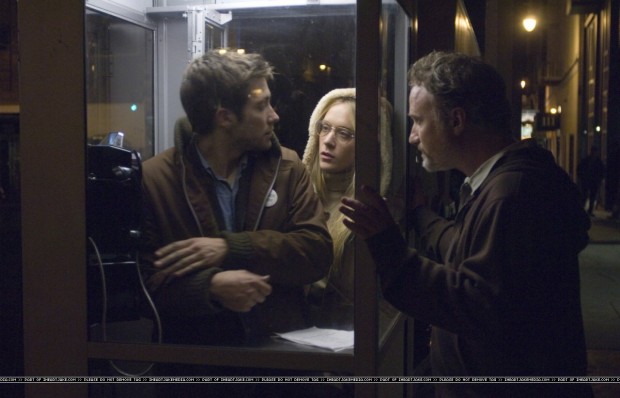
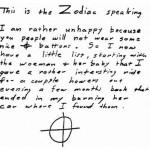
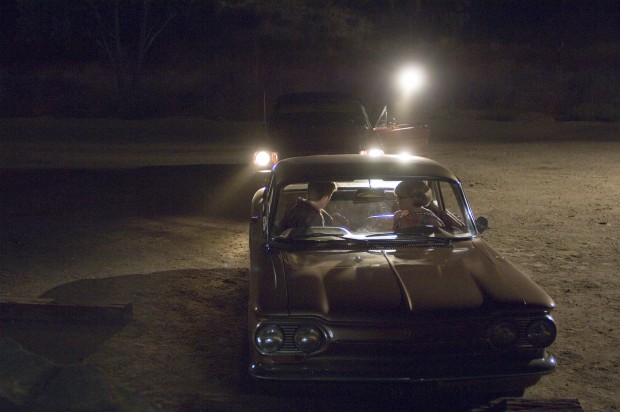
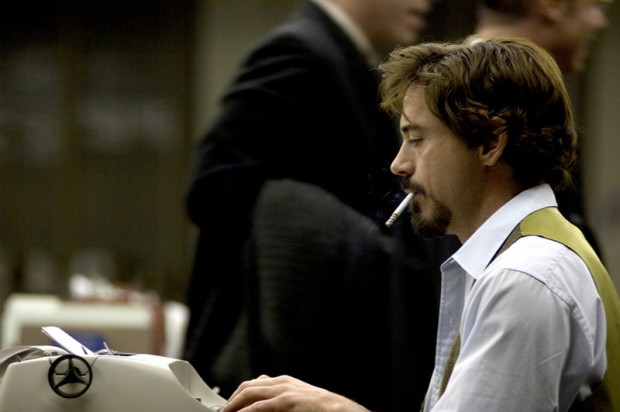
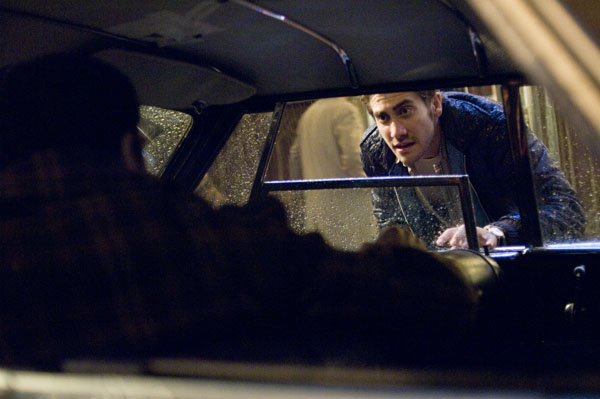
No comments:
Post a Comment